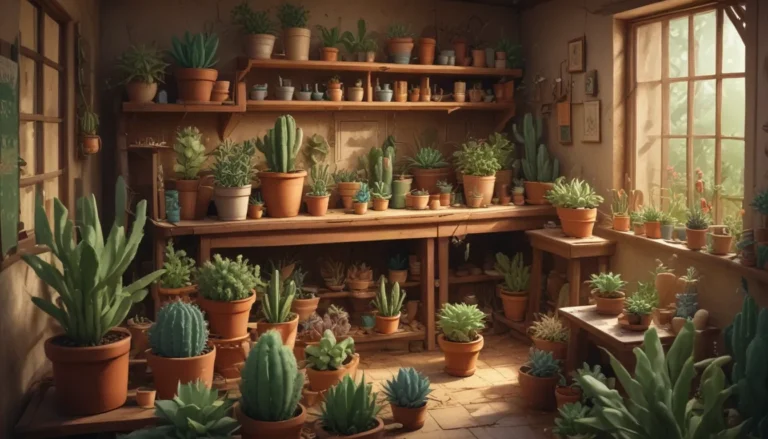Comprehensive Guide to Growing and Caring for Weeping Japanese Maples

If you’ve ever been moved by the sight of a weeping willow tree gracefully bending in the wind, you’ll understand the appeal of weeping Japanese maples. These unique trees with cascading branches and finely dissected leaves add a touch of elegance and drama to any garden or landscape.
In this comprehensive guide, we’ll explore everything you need to know to successfully grow and care for weeping Japanese maples in your own outdoor space. From understanding their unique characteristics to selecting the right cultivars and managing pests and diseases, we’ve got you covered. Let’s dive in and discover the beauty of these captivating trees!
What Are Japanese Weeping Maples?
Japanese weeping maples, also known as Acer palmatum var. dissectum, are prized for their weeping form and intricate, dissected leaves. These trees typically reach a height of eight to 10 feet, making them slightly shorter than standard Japanese maples. However, they make up for their smaller stature with their distinctive appearance and graceful foliage.
Some common features of Japanese weeping maples include:
– Drooping growth habit of branches and foliage
– Dissected leaves with seven to eleven lobes each
– Lace-like foliage that sways in the wind
– Commonly known as threadleaf, cutleaf, or laceleaf Japanese maple
While each cultivar may have unique characteristics, the weeping habit and finely dissected leaves are common traits shared by all Japanese weeping maples.
Cultivation and History
Japanese weeping maples thrive in USDA Hardiness Zones 5 to 8 and trace their origins back to China, Japan, and Korea. The heavy cultivation of these trees by the Japanese people over centuries earned them the moniker “Japanese maples.”
Introduced to England and the eastern United States in the mid-19th century, Japanese weeping maples have since become popular ornamental trees in gardens worldwide. Cultivated by Japanese immigrants, these trees found their way to America and gained recognition thanks to pioneering efforts by horticulturists like J. D. Vertrees.
Key points about cultivation and history include:
– Best grown in Zones 5 to 8
– Originated in China, Japan, and Korea
– Introduced to England and the USA in the 19th century
– Cultivated by Japanese immigrants and popularized by horticulturists
With a rich history and diverse cultivars, Japanese weeping maples continue to capture the hearts of gardeners around the world.
Propagation Methods
When it comes to propagating Japanese weeping maples, it’s best to avoid growing them from seed and instead focus on methods like cuttings and transplanting.
Propagation methods include:
– Rooting softwood cuttings in spring
– Transplanting established nursery trees
– Avoiding seed propagation for genetic consistency
By utilizing the right propagation techniques, you can ensure that your Japanese weeping maples retain their desirable traits and characteristics.
How to Grow Japanese Weeping Maples
Successful cultivation of Japanese weeping maples hinges on providing the right growing conditions, including climate, soil, water, and fertilizer requirements.
Key growing tips include:
– Optimal partial shade exposure
– Well-draining soil with slightly acidic pH
– Moderate irrigation and spring fertilization
– Choose fertile, sandy, or silt loam soil types
By following these growing tips, you can foster healthy and vibrant Japanese weeping maples in your landscape.
Pruning Techniques
Effective pruning is essential for maintaining the health and aesthetics of Japanese weeping maples. Regular removal of diseased, dying, or unwanted branches can help shape the tree and promote new growth.
Pruning tips for Japanese weeping maples include:
– Using sterilized tools to prevent disease spread
– Removing diseased or damaged branches promptly
– Shaping the tree to achieve desired aesthetics
With proper pruning techniques, you can enhance the appearance of your Japanese weeping maples and keep them in top condition.
Selecting Cultivars
With a wide range of cultivars to choose from, selecting the right Japanese weeping maple can be an exciting but daunting task. Explore some standout cultivars known for their unique foliage colors, growth habits, and cold-hardy traits.
Notable Japanese weeping maple cultivars include:
– Crimson Queen: Known for crimson red leaves and cascading branches
– Inaba Shidare: Large-leafed cultivar with purple-red foliage
– Seiryu: Upright-growing variety with vibrant fall colors
– Viridis: Widely available cultivar with yellow-gold or red foliage
– Waterfall: Shrubby cultivar with large, colorful leaves
Key points about cultivar selection include:
– Choose cultivars based on desired colors and growth habits
– Consider unique traits and ornamental value
– Match cultivars to your landscape design and preferences
By selecting the right cultivars, you can create a stunning display of Japanese weeping maples in your garden.
Managing Pests and Diseases
While Japanese weeping maples are resistant to rabbit damage, they can still fall victim to common pests and diseases. Understanding how to identify and control issues like aphids, ambrosia beetles, anthracnose, and leaf scorch is essential for maintaining tree health.
Tips for managing pests and diseases include:
– Identifying common insect pests like aphids and ambrosia beetles
– Implementing preventive measures like horticultural oil and insecticides
– Monitoring for signs of diseases like anthracnose and leaf scorch
– Adopting cultural practices to minimize pest and disease risks
By staying vigilant and taking proactive steps, you can protect your Japanese weeping maples from harmful pests and diseases.
Best Uses in the Landscape
Japanese weeping maples are ideal specimen plants that command attention with their unique appearance and graceful form. Whether planted as standalone specimens or in groupings, these trees add a touch of elegance to any garden setting.
Key uses for Japanese weeping maples include:
– Specimen plantings to showcase unique characteristics
– Focal points in gardens or landscapes
– Background plantings to enhance visual interest
By strategically placing Japanese weeping maples in your landscape, you can create stunning focal points and showcase their beauty to full effect.
Quick Reference Growing Guide
For quick and easy reference, here’s a summary of essential information about growing Japanese weeping maples:
- Plant Type: Deciduous tree
- Flower/Foliage Color: Gold, purple, red/green, orange, purple, red
- Native to: China, Japan, Korea
- Hardiness (USDA Zone): 5-8
- Maintenance: Low to moderate
- Exposure: Partial shade
- Soil Type: Fertile, sandy, silt loam
- Soil pH: 5.5-6.5
- Height: 8-10 feet
- Spread: 10-12 feet
- Water Needs: Moderate
- Common Pests and Disease: Aphids, ambrosia beetles, mapleworms; anthracnose, leaf scorch
By referring to this quick guide, you can easily access key information on growing and caring for Japanese weeping maples.
The Beauty of Japanese Weeping Maples
In conclusion, Japanese weeping maples are captivating trees that bring a touch of elegance and drama to any garden or landscape. With their weeping form, intricate foliage, and vibrant colors, these trees are sure to steal the show wherever they are planted.
If you’re looking to add a unique and eye-catching element to your outdoor space, consider incorporating Japanese weeping maples into your landscape design. With proper care and maintenance, these trees will continue to delight and inspire for years to come.
For more gardening insights and tips, feel free to share your thoughts and questions in the comments section below. We love hearing from our readers and are here to help you grow your gardening knowledge and skills.
For additional resources and guides on Japanese maples, check out our related articles:
– How to Grow Japanese Maple Trees
– A Guide to the Different Types of Japanese Maple Trees
– 21 of the Best Japanese Maple Varieties
– How to Graft Japanese Maple Trees
Thank you for joining us on this journey through the enchanting world of Japanese weeping maples. Happy gardening!





